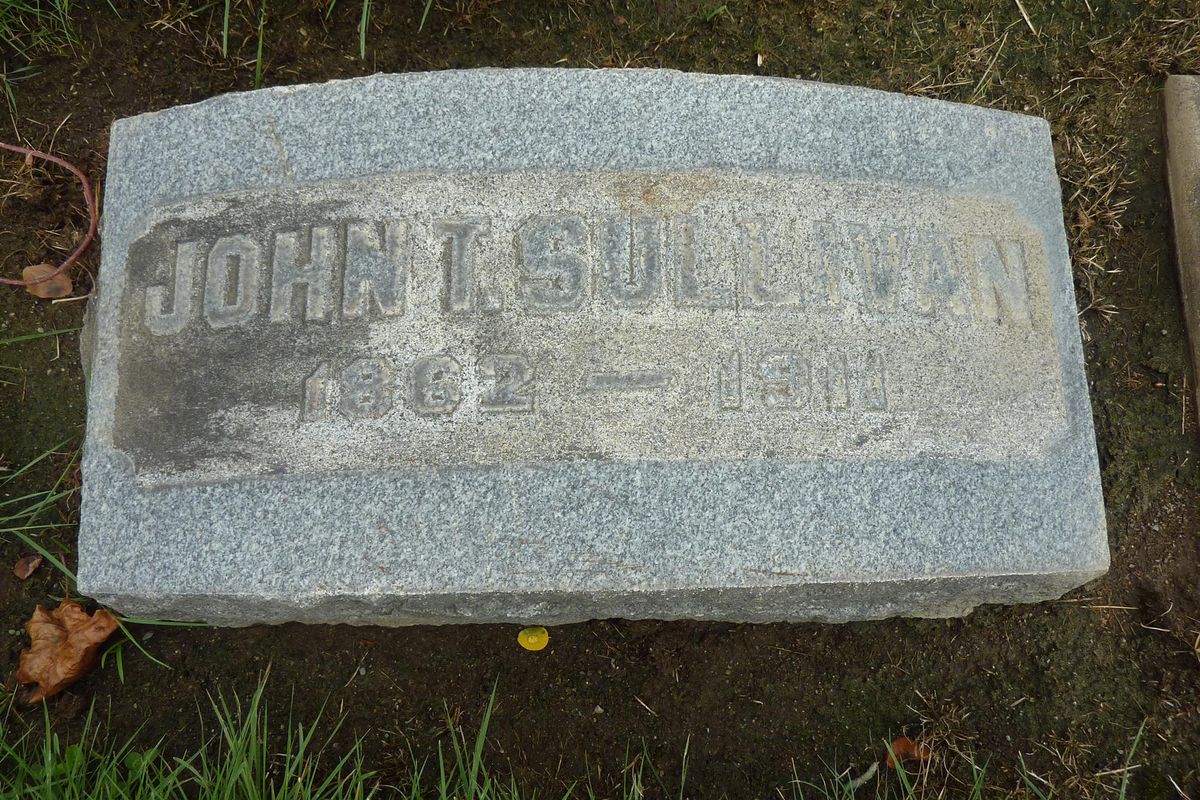Landmarks: Alabama case helped solve Spokane officer’s killing

Of the many members of law enforcement buried in cemeteries in Spokane County, most have died of natural causes and some in the line of duty. And then there are the few who were assassinated, one of whom is former acting Spokane Police Chief John T. Sullivan, who was shot in the back in his own home in January 1911.
It appeared that this crime would go unsolved, but a murder across the country 13 years later seemed to have solved this case.
Sullivan, 48, who at the time was a captain with the police force, was sitting in a chair near a window of his home at 1314 W. Sinto Ave. at about 3 p.m. on Jan. 5, 1911. An assailant fired through the window and the copper-jacketed 100-grain .32-20 caliber Winchester Center Fire bullet went into Sullivan’s back and through his right lung. Sullivan, who had been home alone with his 3-year-old daughter and 5-week-old son, managed to telephone for help, according to newspaper accounts (his wife had gone to the theater with her sister).
He survived the initial shooting and it appeared he might recover, but Sullivan died at Sacred Heart Hospital two days later after suffering a pulmonary embolism. (Sacred Heart is where he met his wife in 1900 while visiting a fellow officer who had been shot.)
The 6-foot-4-inch tall Sullivan, who was born in Ireland, was described as a man’s man who took care of business. “It was a tough job and he might well have been heavy-handed,” said Tony Bamonte, a former law enforcement officer who is the author of books about local history. “He was a strict enforcer of the law and surely made enemies. He came down hard on prostitution and gambling and any kind of activities on the streets that were unlawful, from begging to vagrancy.”
In November 1909, a monthlong civil disobedience campaign by the Industrial Workers of the World took place in Spokane, and it came into direct conflict with Sullivan’s enforcement of ordinances banning speech and assembly on the streets. The arrests and other events brought Spokane into the national spotlight. The Spokesman-Review and Spokane Daily Chronicle newspapers generally supported his actions, but the Spokane Press, which often mocked Sullivan’s Irish brogue, mounted a steady campaign against the police chief. In time he was forced to resign, but he retained the title of captain.
From what would become his hospital deathbed Sullivan asked to meet with an Associated Press reporter and gave a statement laying blame for the shooting “wholly and absolutely” to the Spokane Press and Fred C. Robertson, the newspaper’s attorney. “They have hounded and slandered me for years and did all in their power to make me enemies. They alone are responsible for this affair. I forgive the man who shot me. I forgive everyone who ever did me wrong.”
Investigators believed the shooter was a professional because of the kind of bullet used and the fact that just a single shot was fired. Speculation was that the shooting was retribution for the IWW affair or for Sullivan’s efforts to curb gambling and prostitution or possibly revenge. One newspaper article speculated that Sullivan had been about to testify before a grand jury investigating graft and corruption by city officials and that Sullivan had stated, “I have protected those fellows long enough and I think I will just tell … how things stand when it convenes.”
Even though a generous reward was offered and many leads followed, no viable suspect was ever identified. But then in September 1924, a man named Victor Claude Miller was killed in Alabama by his wife in what was declared an act of self-defense. His wife told authorities her husband had bragged about many murders, including getting away with killing a police chief in Spokane.
Bamonte said two Spokane officers worked diligently with Alabama authorities and a compatriot of Miller’s and determined beyond a doubt that Miller had been the shooter and that he had committed other murders in the area. Apparently Miller had provided details about the shooting to his friend that had not been made public, Bamonte said. But no connection between Sullivan and Miller, who was a railroad worker in Spokane at the time of the assassination, was ever established. Nor was a motive ever found.
Though known as a strict enforcer of the law, Sullivan was also forward thinking and innovative. He created the first motorcycle traffic unit in Spokane and in 1910 agreed to appoint a female police officer to handle juvenile cases.
Sullivan met his wife in 1900 at Sacred Heart Hospital, where she was a nurse. He was there visiting a fellow officer who had been shot.
When he was police chief, he initiated the custom of honoring deceased police officers by placing a wreath on each man’s grave on Memorial Day. On May 31, 1911, Sullivan, who was buried in the Elks Rest section of Greenwood Memorial Terrace, was the first officer to receive this honor.